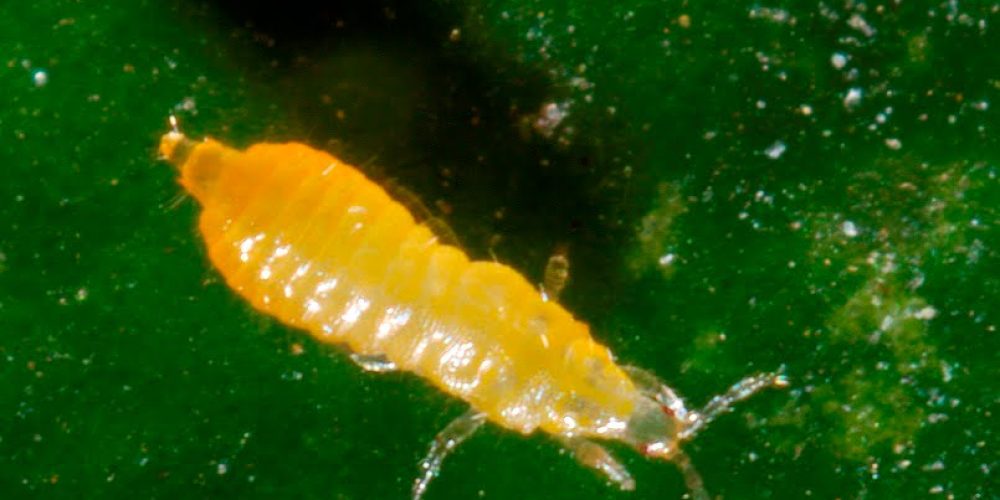Table of contents of the article
ToggleMealybugs are considered a pest that infects lemon leaves, leading to plant weakness and crop deterioration. This article from the “WORLD OF PLANTS” website provides the most important information about the symptoms of mealybug infection on lemon leaves and methods of prevention and control.
Causes of mealybugs on lemon leaves
- Disease name: Mealybug on lemon leaves
- Scientific name: Planococcus citri
- Type of disease: bedbug infestation
- Disease family: Planococcus
The white, powdery, or “mealy” waxy substance that covers the bodies of adult females and nymphs is the reason for giving the mealybug this name, as the mealybug is considered a scale insect, as it sucks sap.
Symptoms of mealybugs on lemon leaves
The mealybug targets the leaves and branches of the lemon plant. The females and nymphs of the mealybug have white waxy threads extending along the edges of their bodies. The mealybug also secretes a large amount of waxy substances that promote the growth of sooty mold on the infected plants, which affects the photosynthesis process of the infected lemon plant. Which leads to leaf fall, wilting, and distortion of new leaves.
Suitable conditions for the spread of mealybugs on lemon leaves
The insect's life cycle is mainly related to temperature, as it lasts 90 days at a temperature of approximately 18°C and 30 days at a temperature of 30°C. The female mealybug can lay its eggs in a period ranging from 15 to 26 days after the beginning of its life as an adult. Scale insects, including mealybugs, do not go through a dormant stage. Scale insects move to lemon germination, which forms a host for the insect, when climatic conditions become more suitable.
Development cycle of mealybugs on lemon leaves
The mealybug spends the winter in the form of a larvae at the soil level. The mealybug's life cycle takes about (6-12) weeks during the warmer summer months. The pale yellow eggs are laid in an elongated, loose cotton sac that extends below and behind the female. About 300-600 eggs occur within one to two weeks, after which the female mealybug dies. The eggs hatch in about a week, and there are several generations during the year.

Losses resulting from the spread of mealybugs on lemon leaves
When the infestation develops and mealybugs are present in large numbers, the damage can be very severe, affecting the quality of the lemon juice, which reduces the commercial value of the plant.
Controlling mealybugs on lemon leaves
- Pruning the lemon plant to get rid of the diseased branches.
- Use organic neem oil as it acts as an insect repellent.
- Spray the affected area with isopropyl alcohol in case of severe infection two to three times a week.
- Spray the soil with a suitable insecticide.
- Getting rid of weeds and harmful plants in the field.
- Wash the tree with agricultural soap in case of severe infestation.
- Use insecticides containing acetamiprid or imidacloprid.

Preventive measures for mealybugs on lemon leaves
- Monitor the crop for early detection of infestation.
- Monitor the crop for early detection of infestation.
- Use clean and sterilized agricultural equipment to avoid transmission of the disease from other infected crops.
In conclusion, we would like to note that we, at the world of plants website, offer you all the necessary services in the world of plants, we provide all farmers and those interested in plants with three main services::-
- Artificial intelligence consulting service to help you identify diseases that affect plants and how to deal with them.
- Blog about plants, plant diseases and care of various crops ... You are currently browsing one of her articles right now.
- An application that provides agricultural consultations to clients, as well as a service for imaging diseases and knowing their treatment for free – Click to download the Android version from Google Play Store، Click to download the IOS version from the Apple App Store.
Sources:
Citrus Mealybug – NC STATE EXTENSION
Mealybug Control in Your Garden – yates
Citrus mealybug – Queensland




